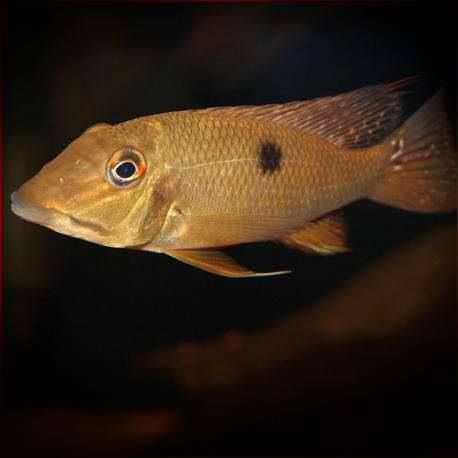More info
Datasheet
| Minimum Tank Size | 750 litres / 198.13 US gallons |
| Maximum Size | 25.5cm / 10.04inches |
| Temperature | 20°C / 68.00°F - 28°C / 82.40°F |
| Hardness | 1.01dgH / 18ppm - 10.03dgH / 179ppm |
| pH | 5.0-7.5 |
Behaviour
Satanoperca spp. exhibit peaceful behavior unless breeding, typically not preying on fishes larger than a few millimeters. They coexist well with peaceful species enjoying similar environmental conditions, though they may display aggression towards weaker individuals if not kept in proper numbers. Aquarists have reported successful tank mate scenarios with freshwater stingrays, but instances of disappearance of cichlids have been noted at night. S. leucosticta tends to form loose aggregations, showing noticeable dominance hierarchy within groups.
Feeding and Diet
Being benthophagous by nature, Satanoperca spp. are termed "eartheaters," sifting substrate for food and expelling non-edibles. Their diet includes small aquatic and terrestrial invertebrates, plant material, organic detritus, and sediment. With an inability to ingest larger food items, a varied diet of high-quality prepared foods, live or frozen offerings like bloodworms and Artemia, and plant matter is advised. Feeding smaller portions multiple times a day stimulates natural browsing behavior and enhances growth and health.
Reproduction & Dimorphism
Although unreported, Satanoperca lilith is presumed to be a biparental substrate-spawner like S. daemon. Minimal sexual dimorphism exists, with adult males slightly larger than females. The S. daemon and S. acuticeps groups are substrate spawners, while the S. jurupari group are mouthbrooders. The genus consists of distinct groups with unique reproductive strategies and morphological characteristics, reflecting their evolutionary diversity.
Habitat and Distribution
Satanoperca lilith is mainly found in black and clearwater river channels, tributaries, oxbows, and floodplain lakes in Brazil. The species' distribution spans from the Rio Japurá to the lower Rio Tapajós, including various tributaries within the region. Typically observed over sandy or muddy substrates with leaf litter and submerged branches, they thrive in specific aquatic environments within their natural range.
Aquarium Setup
To mimic their natural behavior, a soft sandy substrate is essential for Satanoperca lilith to browse comfortably. Coarser materials can impede feeding and pose ingestion risks. Dim lighting, driftwood pieces, roots, and branches are favored tank decorations. Maintaining water quality is crucial, with a need for soft, acidic water to ensure the well-being of S. lilith. Adequate filtration, regular water changes, and monitoring of chemical parameters are key to keeping these cichlids healthy in captivity.
Refer to the table for specific water parameter requirements.

